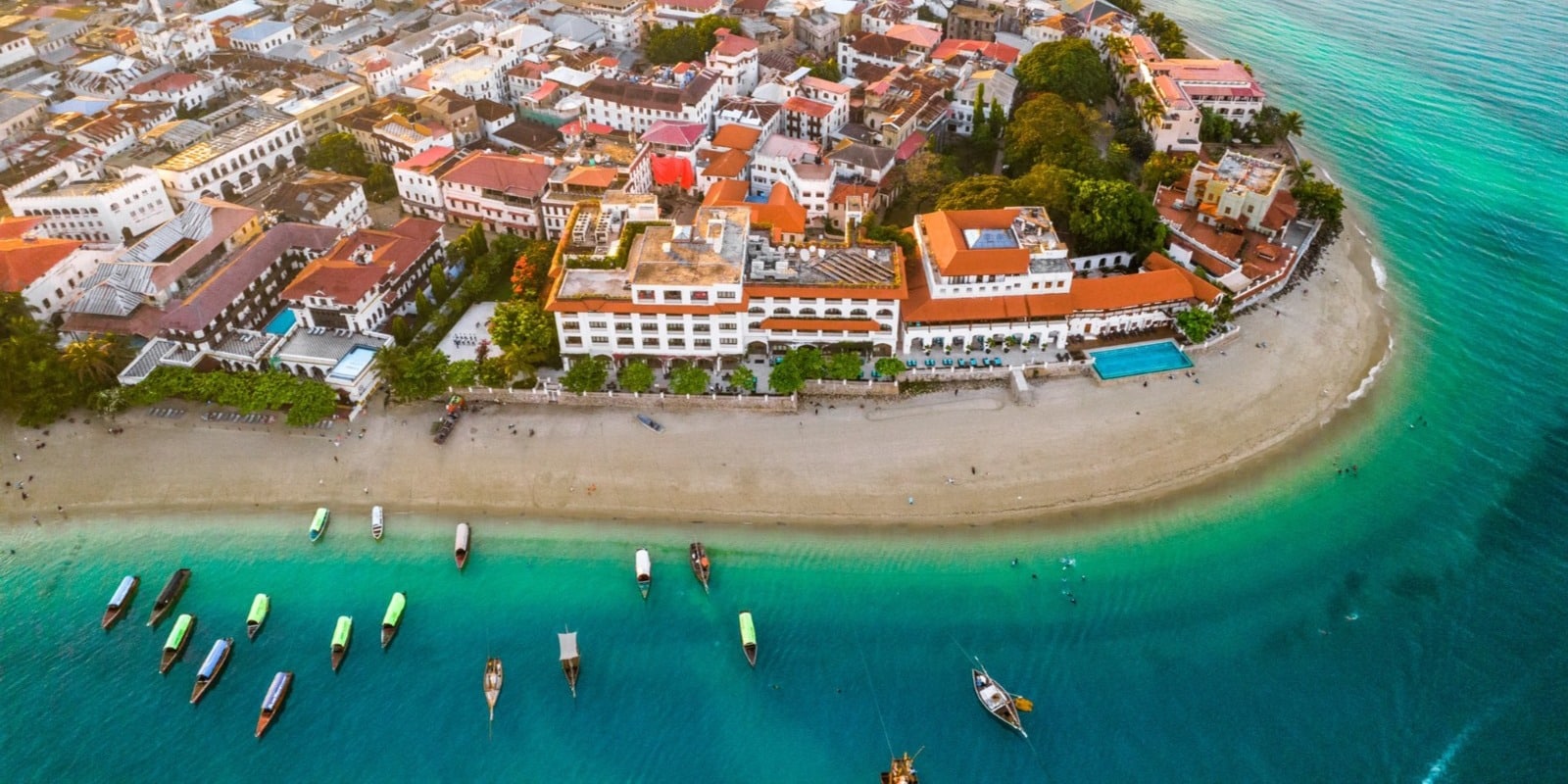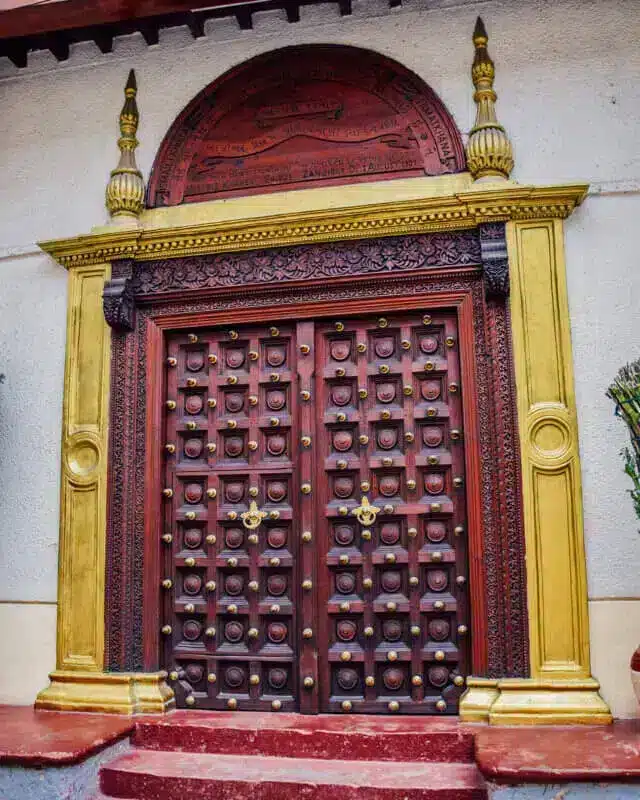Stone Town, Zanzibar: A Timeless Journey Through Swahili History and Culture
Introduction
Nestled on the western coast of Unguja, the main island of the Zanzibar Archipelago, Stone Town (Mji Mkongwe) is a treasure trove of history, culture, and architecture. As the heart of Zanzibar, this UNESCO World Heritage Site reflects centuries of African, Arab, Persian, Indian, and European influences. Once the center of the spice trade and the slave trade, Stone Town has transformed into a vibrant cultural hub, attracting travelers eager to experience its unique heritage.
Whether you’re drawn by its labyrinthine streets, grand historic sites, or bustling markets, Stone Town offers an unforgettable journey through time. In this guide, we’ll explore the top things to do in Stone Town, ensuring you make the most of your visit.

1. Marvel at the Iconic Zanzibari Doors
One of the most striking features of Stone Town is its ornate wooden doors. These intricately carved entrances tell stories of the town’s history, culture, and social hierarchy. Traditionally, the Indian-style doors feature rounded tops and brass studs, originally designed to protect against elephant attacks in India. In contrast, Arab-style doors are rectangular, often adorned with calligraphy and floral motifs.
💡 Tip: Stroll through Kenyatta Road and Gizenga Street for some of the most beautifully preserved doors!
2. Visit the Historic Old Fort (Ngome Kongwe)
Built by the Omani Arabs in the late 17th century, the Old Fort is the oldest structure in Stone Town. Originally constructed to defend against the Portuguese, it later served as a prison and now hosts cultural events, including the famous Zanzibar International Film Festival (ZIFF).
🎭 Don’t Miss: Live performances of traditional Taarab music and dance in the fort’s open-air amphitheater.
3. Explore the Former Slave Market & Anglican Cathedral
Stone Town has a dark past as a major hub in the East African slave trade. A visit to the Old Slave Market, now home to the Anglican Cathedral of Christ, is a somber but essential experience.
🔍 Highlights:
- The underground slave chambers, where captives were held in inhumane conditions.
- The cathedral’s high altar, built on the exact spot where enslaved people were once auctioned.
4. Watch the Sunset at Forodhani Gardens
In the evening, Forodhani Gardens comes alive with street food vendors serving Zanzibar’s best delicacies. Enjoy a plate of Zanzibar pizza, grilled seafood, and sugarcane juice while watching the sun dip below the Indian Ocean.
🌅 Best Time to Visit: Arrive just before sunset (around 6:00 PM) to enjoy golden-hour photography.
5. Discover Freddie Mercury’s Roots
Did you know that Queen’s legendary frontman, Freddie Mercury, was born in Zanzibar? The Freddie Mercury Museum is a tribute to his life, showcasing memorabilia and photographs from his childhood in Stone Town.
🎶 Music lovers’ tip: Stop by Mercury’s Restaurant for a cocktail while listening to Queen’s greatest hits!
6. Get Lost in the Narrow Streets
One of the best ways to experience Stone Town is by wandering its maze-like streets. Along the way, you’ll discover hidden courtyards, lively markets, and beautifully aged coral-stone buildings.
🚶 Insider Tip: Skip Google Maps! Let curiosity guide you—you’ll stumble upon some incredible gems.
7. Shop at Darajani Market
If you’re looking to experience local life, Darajani Market is the place to be. Built in 1904, this bustling market offers a mix of fresh seafood, spices, fruits, and handcrafted souvenirs.
🛍️ What to Buy:
- Zanzibar spices (cloves, nutmeg, and cinnamon)
- Handwoven Kikoi and Kanga fabrics
- Locally made Tanzanite jewelry
8. Experience the Magic of Prison Island
A short boat ride from Stone Town, Changuu Island (Prison Island) is famous for its giant Aldabra tortoises, some over 150 years old! Though originally used as a prison, the island is now a serene getaway with crystal-clear waters, perfect for snorkeling.
🐢 Top Activities:
- Feed and take photos with the tortoises.
- Snorkel in the surrounding coral reefs.
9. Savor Swahili Cuisine at Lukmaan Restaurant
No visit to Stone Town is complete without indulging in authentic Swahili food. Lukmaan Restaurant is a must-visit for its local delicacies, including biryani, pilau, octopus curry, and spiced tea.
🍽️ Must-Try Dish: Zanzibar’s famous Urojo (Zanzibar Mix), a delicious street food soup with fried fritters, potatoes, and chutney.
10. Visit the House of Wonders (Beit-al-Ajaib)
Once the grandest building in East Africa, the House of Wonders was the first structure in Zanzibar to have electricity and an elevator. Built in 1883 by Sultan Barghash, it now serves as a museum showcasing Zanzibari history and culture.
🏛️ What’s Inside?
- Exhibits on Swahili maritime history
- Traditional dhow boats used by Zanzibari traders
(Note: The House of Wonders is currently under restoration following structural damage in 2020.)

Best Time to Visit Stone Town
✅ Dry Season (June – October & December – February): Best for sightseeing and outdoor activities.
✅ Wet Season (March – May & November): Fewer crowds, but some attractions may be harder to access.
Where to Stay in Stone Town
🏨 Luxury: Park Hyatt Zanzibar – A beachfront hotel blending modern elegance with Swahili charm.
🏡 Mid-Range: Emerson Spice – A boutique hotel inside a restored palace.
🎒 Budget: Lost & Found Hostel – Affordable and centrally located.
Conclusion: Why Stone Town is a Must-Visit
Stone Town isn’t just a place; it’s an experience. From its storied past to its vibrant culture and stunning architecture, this historic city offers an immersive journey into Zanzibar’s soul. Whether you’re a history buff, foodie, or adventure seeker, Stone Town has something for everyone.
Are you ready to explore Zanzibar’s most enchanting city? Plan your trip today and discover the magic of Stone Town! 🌍✈️
📩 Need Help Planning Your Zanzibar Adventure?
Explore the best of Zanzibar, Serengeti, and Kilimanjaro with expert guidance.
📧 Contact: info@gie.co.tz | 🌍 Website: www.gie.co.tz
🚀 Tanzania Safari Packages:
Let’s make your African adventure unforgettable! 🌍✨





